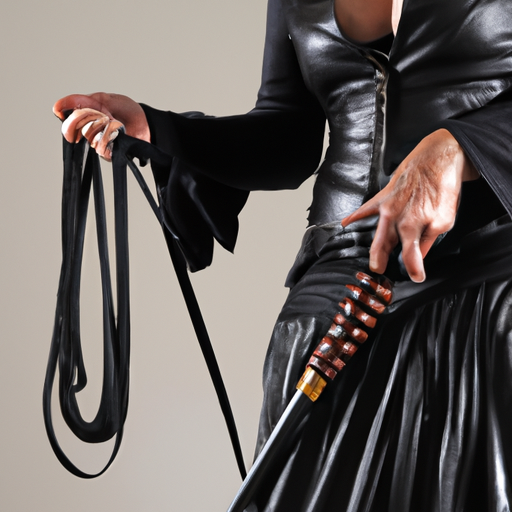The world of BDSM and dominatrix women is often shrouded in mystery and misconception. Society tends to have preconceived notions about the motivations and desires of dominatrix women, often fueled by stereotypes and misinformation. In this blog post, we will debunk some of these misconceptions and shed light on the truth behind the motivations and desires of dominatrix women.

Misconception 1: Dominatrix women are power-hungry and manipulative.
One common misconception is that dominatrix women are driven by a need for power and control, and that they use their dominance to manipulate others. However, this is far from the truth. While it’s true that dominatrix women engage in power exchange dynamics, their motivations are not rooted in a desire for power over others. Instead, many dominatrix women see their role as a way to provide a safe space for exploration, healing, and personal growth. They are skilled at creating an environment of trust and consent, where their clients can freely explore their desires and fantasies.
Misconception 2: Dominatrix women are sadistic and enjoy inflicting pain.
Another misconception is that dominatrix women are sadistic and take pleasure in inflicting pain on others. While there may be some dominatrix women who enjoy incorporating elements of pain into their sessions, it is important to note that BDSM is based on the principles of mutual consent and negotiation. A dominatrix woman’s primary focus is on the well-being and pleasure of her clients. Pain, when it is a part of the dynamic, is carefully negotiated and controlled to ensure the safety and enjoyment of both parties involved.
Misconception 3: Dominatrix women are emotionally detached.
It is often assumed that dominatrix women are emotionally detached from their clients and that their interactions are purely transactional. However, this couldn’t be further from the truth. Many dominatrix women build deep connections with their clients based on trust, communication, and empathy. They take the time to understand their clients’ needs, desires, and boundaries, and work together to create a fulfilling experience. Dominatrix women often provide a safe and non-judgmental space where clients can explore their emotions, vulnerabilities, and fantasies.
Misconception 4: Dominatrix women are only interested in sex.
One of the most common misconceptions about dominatrix women is that their work is solely focused on sexual activities. While sex can be a part of the dynamic, it is not the sole focus. Dominatrix women engage in a wide range of activities, such as role-playing, sensory play, bondage, and discipline, which may or may not involve sexual acts. The emphasis is on consent, exploration, and the fulfillment of desires, rather than solely on sexual gratification.
In conclusion, it is crucial to dispel the misconceptions surrounding the motivations and desires of dominatrix women. They are not power-hungry or manipulative, but rather skilled professionals who create safe spaces for exploration and personal growth. Their work is based on trust, consent, and mutual enjoyment. By challenging these misconceptions, we can foster a deeper understanding and appreciation for the complex world of BDSM and the role of dominatrix women within it. Site link.
What is the history and origin of dominatrix women in BDSM culture?
In the world of BDSM culture, the role of dominatrix women holds a unique place. The history and origin of dominatrix women can be traced back to ancient civilizations where power dynamics and control played a significant role in human interactions. Throughout history, individuals have explored various forms of power exchange, and the emergence of dominatrix women within BDSM culture is a fascinating aspect to explore.

The term ‘dominatrix’ is derived from the Latin word ‘dominatrix,’ which translates to ‘female ruler’ or ‘mistress.’ The concept of dominatrix women can be linked to ancient civilizations such as Ancient Rome, where powerful women known as ‘dominae’ held significant influence over their partners and households. These women were often seen as strong and assertive figures who commanded respect and obedience from their male counterparts.
Moving forward in history, the concept of dominatrix women continued to evolve. In the 18th and 19th centuries, the role of dominant women gained popularity in Parisian brothels. These women, known as ‘dominatrices,’ were skilled in the art of domination and submission, and their services were sought after by those seeking a unique and erotic experience. However, it is important to note that the practice of BDSM and power exchange was not limited to women; dominant men also played a significant role in the development of the culture.
The 20th century saw the emergence of renowned dominatrix women who further shaped the BDSM culture. Women such as Dita Von Teese and Catherine Robbe-Grillet became iconic figures within the BDSM community, promoting the exploration of power dynamics and sexual freedom. These women challenged societal norms and paved the way for the acceptance and recognition of BDSM as a legitimate form of sexual expression.
In recent years, the dominatrix role has expanded beyond the realm of professional dominatrix women to encompass a broader spectrum of individuals. Many couples and individuals engage in BDSM practices, exploring power dynamics and role-playing in consensual and safe environments. The rise of the internet and online communities has provided a platform for individuals to connect, share experiences, and gain knowledge about BDSM practices, including the role of dominatrix women.
It is crucial to emphasize that the practice of BDSM, including the dominatrix role, is based on the principles of consent, communication, and respect. The foundation of BDSM culture lies in the importance of establishing boundaries and engaging in activities that are mutually agreed upon by all parties involved. Consent is a fundamental aspect of BDSM, and it is essential to ensure that all participants are willing and enthusiastic about their roles and activities.
In conclusion, the history and origin of dominatrix women within BDSM culture can be traced back to ancient civilizations, where power dynamics and control played a significant role. Throughout history, the concept of dominatrix women has evolved, with influential figures shaping the culture and promoting the exploration of power dynamics. In contemporary times, the dominatrix role has become more inclusive, with individuals from all walks of life engaging in consensual BDSM practices. However, it is crucial to approach BDSM with respect, communication, and consent to ensure a safe and enjoyable experience for all involved.

Leave a Reply